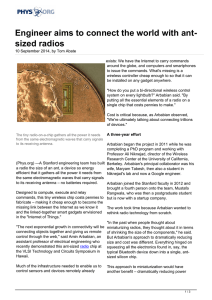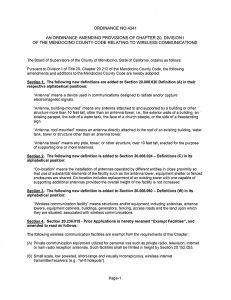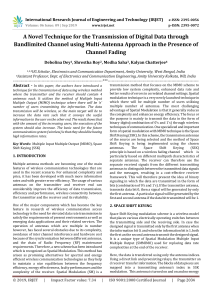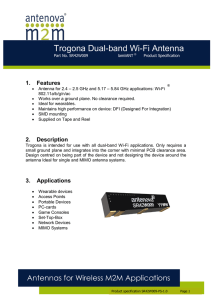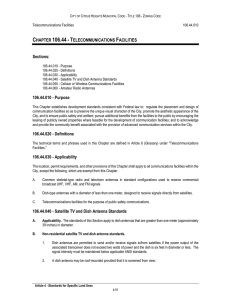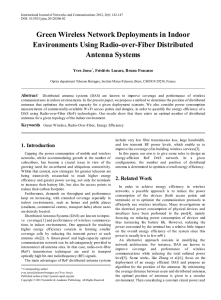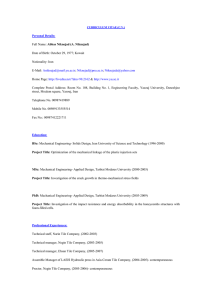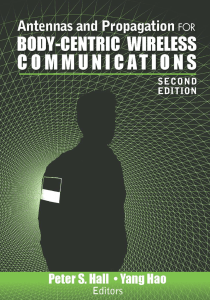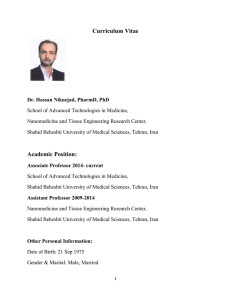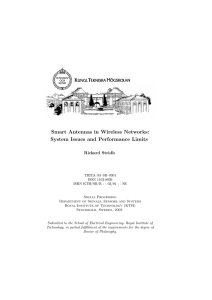The Road Towards xG - A Swarm Perspective
advertisement
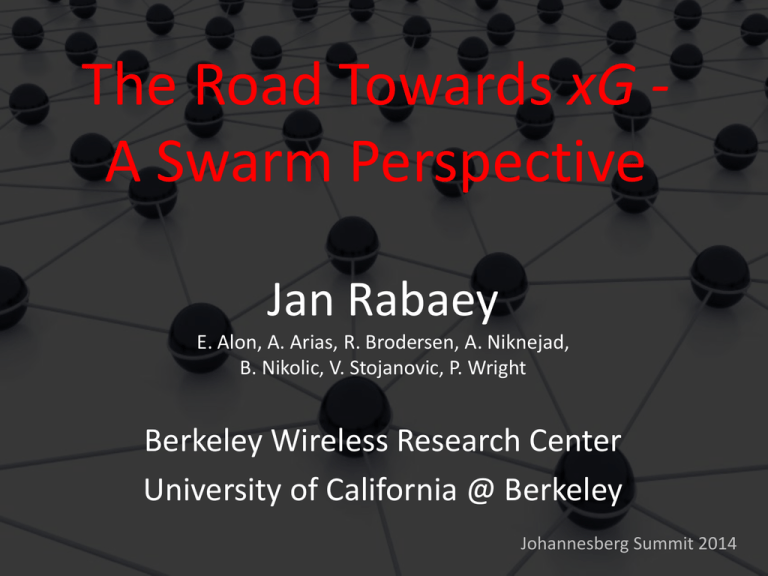
The Road Towards xG A Swarm Perspective Jan Rabaey E. Alon, A. Arias, R. Brodersen, A. Niknejad, B. Nikolic, V. Stojanovic, P. Wright Berkeley Wireless Research Center University of California @ Berkeley Johannesberg Summit 2014 The Wireless Revolution to Continue Nothing new here! [Ericsson 2011] 15.9 ExaByte of Mobile Data by 2018 [Cisco 2014] The Wireless Revolution to Continue But in a far more diverse way Tsensors Summit Stanford, Oct 13 The Buzz around the Swarm The Changing Needs [S. Parkvall, Ericsson 2013] The Evolutionary Approach [S. Parkvall, Ericsson 2013] Let us sit back for a moment … A Different Viewpoint One Ring to Rule All … ? A 21st Century Question in Wireless* How would you construct a network if wireless transceivers would • • • • • Be fully frequency agile Be power scalable over wide range Maintain multiple simultaneous channels Not degrade in the presence of interference Have substantial amounts of computational power xGNet, aka the Fully Untethered Internet! * Another “reverse time machine” – Hurray! Not a day dream … really! Configurable RF (RF-FPGA) • Frequency Agile MultiStandard Transmitters • Multiple radios on a single platform including full-duplex [Nikolic, Niknejad, Alon BWRC, Nokia] Not a day dream … really! IMEC 60 GHz Transceiver [2013] Integrated beamforming using phased arrays Not a day dream … really! Multi-Beam/Frequency Hubs [Courtesy: A. Niknejad] xGNet (aka the fully untethered internet) • Continent - or globe-spanning wireless network that obviates wired infrastructure • Equally supporting all needs – High data rates or small payloads – Low latency or high reliability – Good coverage or high energy efficiency whenever needed! • All at very small and scalable cost and maximum efficiency One possible way … A more plausible way: A Swarm perspective The power is in the numbers! Exploiting density and locality The power of collaboration Effciency multi-hop [Gupta-Kumar00] O(n(d-1)/2) Example: mesh network Energy Spectral Node density n O(1) O(1) Node density n Efficiency Effciency O(n1/2) O(n) O(n) no-collaboration Example: relay network Node density n But: distributed MIMO [Tse07] inherently self-limiting [J. Rabaey, 2011] A fresh look Antenna Swarms or Seas of Antennas (SOA) Conjecture: Effective use of antenna arrays and combinations thereof allow for virtual elimination of interference and offer dramatic improvements in capacity Example: Massive MIMO • Substantial capacity, energy-efficiency, and flexibility benefits available in array radio systems [EU Mammoet Project] 17 A Scalable Approach: FADER (eWallpaper) power printed antenna asic Supports realization of arrays of arbitrary aperture, carrier frequency, # of beams, etc. [Courtesy: N. Narevsky, E. Alon] 18 Simple and cheap manufacturing and assembly process • Screen printed Ag antennas, interconnect 19 • InkJet Flex copper power lines [Courtesy: A. Arias] SOA’s not limited to local environment 100 Gbs/sec at 237 GHz [Kalfass, KIT] 3 Gbs/sec E-band link [www.e-band.com] All of this possible in CMOS or III-V SOA’s not limited to local environment xGNet: How? Hierarchical mesh of xG-Hubs – xG-Hubs could be managed or non-managed, fixed or mobile, power-rich or poor Basic principles: – Antenna arrays create point-to-point links, avoiding broadcast (== interference) – Dynamic management of traffic (aka interference) using all available parameters: frequency, space, time – Distributed architecture that combines local optimization with global objectives based on economic incentives (aka connectivity brokerage) Going One Step Further • xGHubs more then access points/routers • Can provide substantial computation and data storage (caching!) • Intelligent networking to stem the data deluge! Converging with the Swarm Micron Hybrid Memory Cube (HMC) [2014] The High-Order Bits • Antennas == Sensors/Actuators • Swarms consisting of trillions of deployed antennas offer new opportunities on intelligent networking • The concept of almost “infinite capacity” at high efficiency may not be too far-fetched [Warner Bros, 1978]

